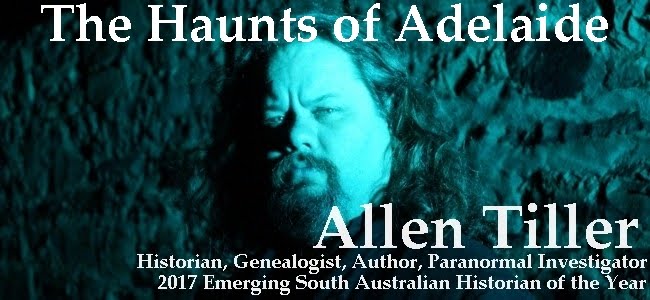Michael Magee – Adelaide's First Execution
May 2nd 1838, the City of Adelaide was abuzz with the excitement of a predetermined death!
In the parklands, just below the junction of Mills and Strangways Terrace, Adelaide’s first makeshift gallows, an old tree, was silently standing, waiting for a convict, to publicly lose his life for his crimes.
Michael Magee was an Irish born immigrant aged 25 years old when he was found guilty of his crime of willingly attempting to kill a man. That man was Mr Samuel Smart, the colony Sheriff.
Mr Smart had been sitting in his office on March 22nd 1838, busily writing reports, when two men, Magee, and another fellow named Morgan, burst through the door. Magee levelled a gun at Mr Smarts head, and without flinching fired. Magee, however, was not a good shot, and the bullet only nicked his ear and seared a line across his cheek.
Before Mr Smart had praised the Lord for his luck, his reflexes kicked in, and he stood and grabbed Magee's still hot gun from his hands, the men had a scuffle, and the two villains escaped – but not for long.
The alarm was raised, and Magee and Morgan were dually captured, tried, convicted and sentenced, in almost record time.
Morgan was sentenced to “Transportation for Life” and Magee to capital execution.
There was much fuss in Adelaide at the sentence of Magee, no-one had been executed in the colony up until this point, and there was no State-appointed “ Jack Ketch”(a name used during the period for the masked executioner)
The job of executioner was advertised for 5 pounds, and no-one came forward, it soon blew out to 20 pounds, and still, no-one came forward. It was at this point that the State charter was checked and it was pointed out that the Colony Sheriff if no other persons could be appointed, would have to carry out the ghastly deed. In this particular case, the Sheriff carrying out such a task on the person who had assailed him would have been unseemly.
On the morning of the execution, a large crowd had gathered at the aforementioned location, everyone was uncertain of who would be executing Magee.
A horse and cart were soon seen coming towards the tree, on the back a coffin, and sitting on top, Magee and a man dressed in an executioner mask, which barely hid his identity.
Magee remained staunch throughout the reading of his crime and the public display of his own death.
The event was huge an era before movies, television and the internet, and most of Adelaide, including women and children, had come to watch, but no-one could foresee what was about to unfold before their very eyes.
Magee, standing before the throngs of people, confessed his guilt to the amassed audience, but vehemently denied being an escaped convict, an accusation levelled against him at trial.
He stood on the card, hands tied together and a cap placed over his head. The executioner came forward and passed Magee's head through the hemp rope noose, which had been hung from the old tree.
The executioner whipped the horses to drive forward, leaving the convicted criminal hanging to his death – but things got drastically out of hand, the knot which was supposed be under Magee's ear, had somehow slipped under his chin.
Magee flailed wildly in the air. In his desperate attempts to save himself, his hands broke free of the rope that bound them, and he grabbed the noose rope and pulled himself up to release the strain on his neck, all the while screaming for mercy.
The Hangman returned and grabbed the flailing legs of Magee, using his own weight to pull the hanging man down and tightening the noose, breaking Magee's neck in the process...
Magee suffered greatly during his execution, and became the talk of the colony, for many many years afterwards people pointed out to visitors to Adelaide, the tree upon which Magee had been hung, and told the horrific story of his demise...
A hand-drawn picture of the hanging:
http://www.samemory.sa.gov.au/site/page.cfm?c=3224&mode=singleImage
© 2007 - 2014 Allen Tiller
have no usage restrictions implied.




,+Saturday+25+March+1865,+page+4.jpg)






